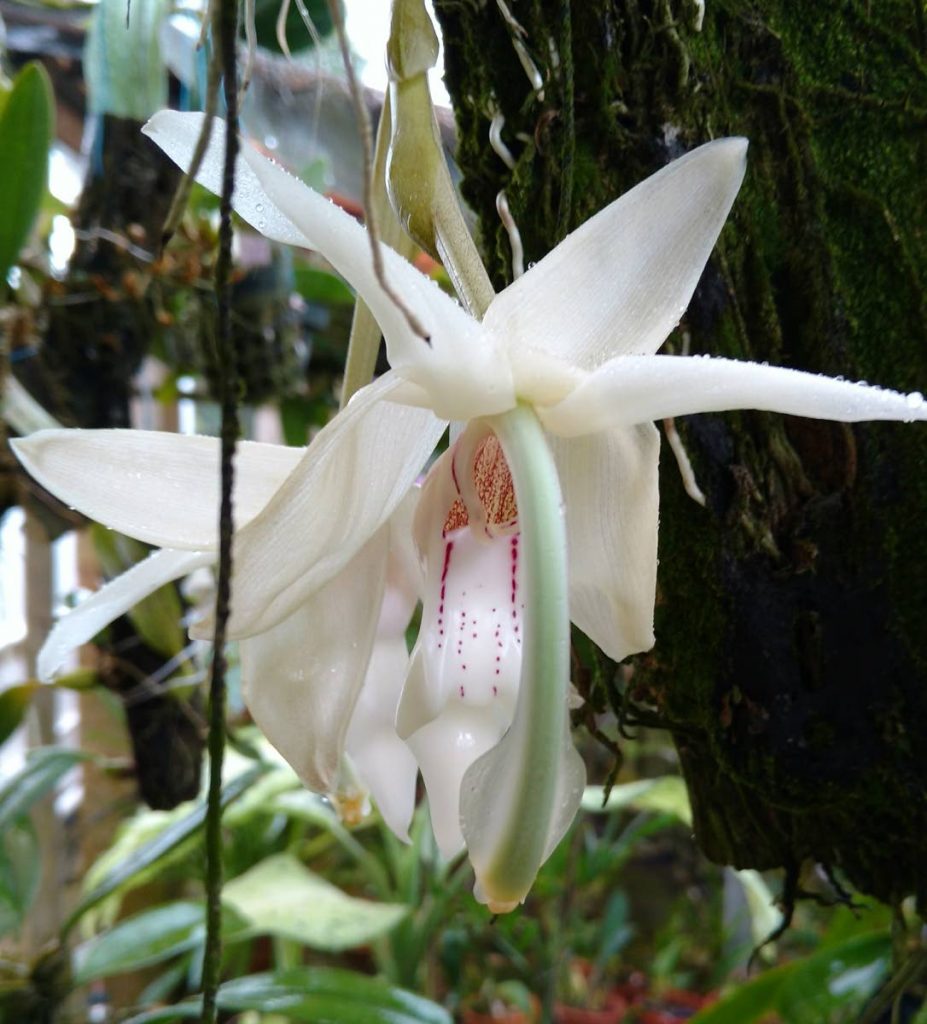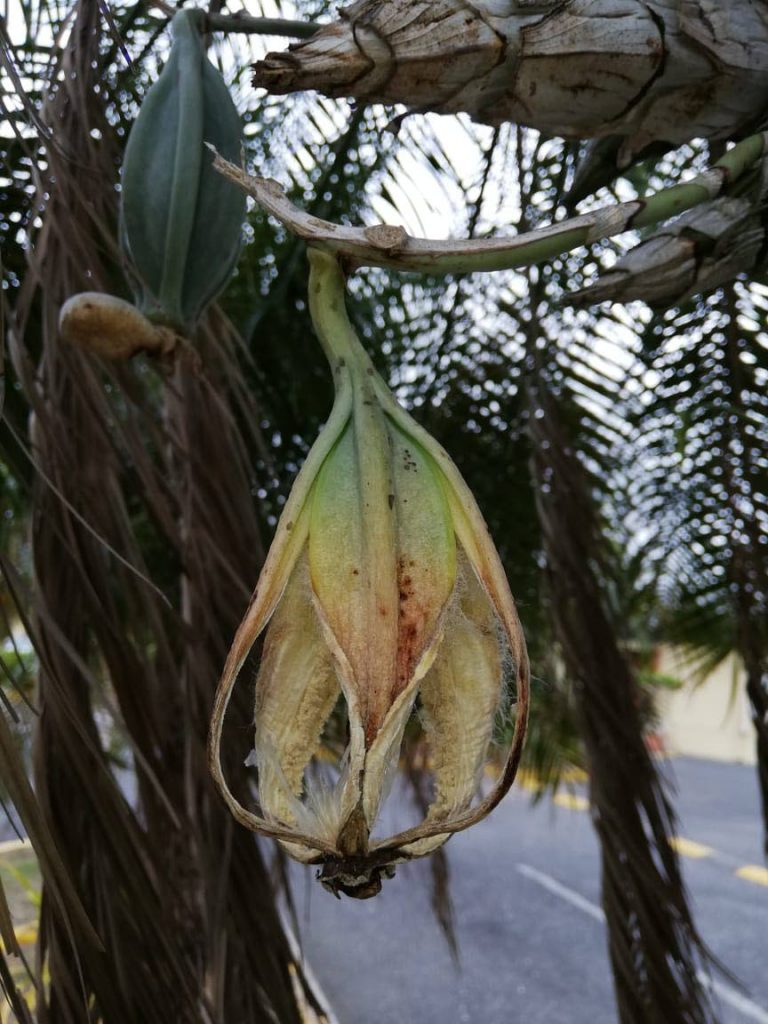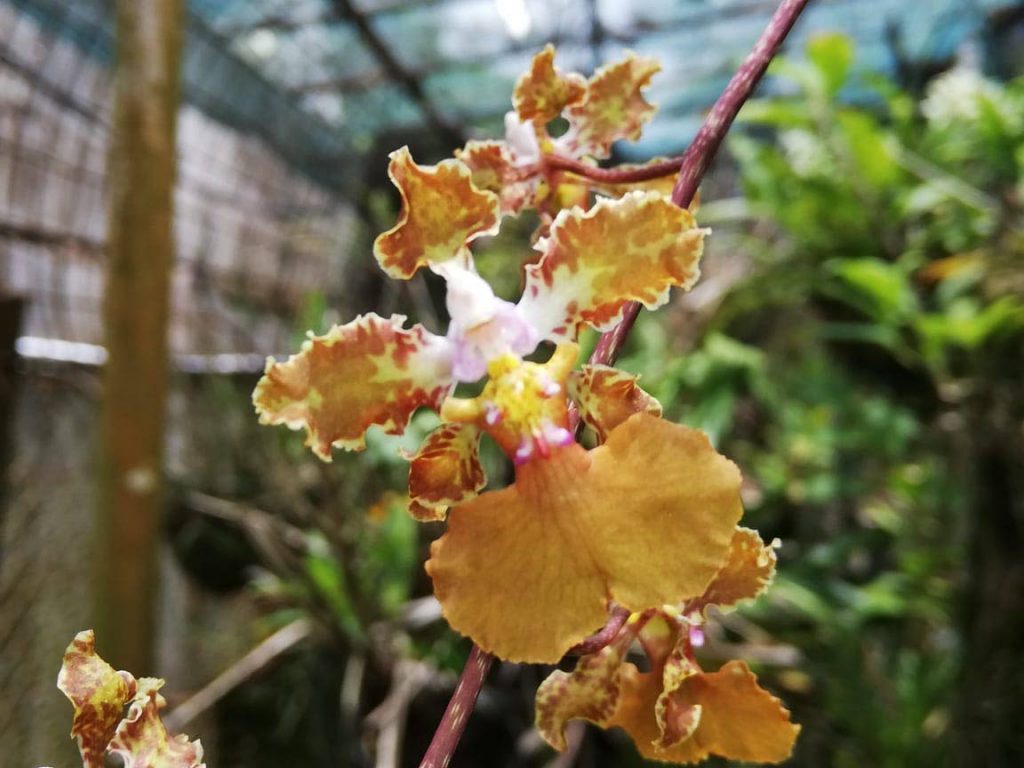Orchids, the hidden gems of TT

SHARON LAURENT
TT Orchid Society
Varying greatly in colour and size, the flowers of orchid species found in TT have long fascinated orchid growers far and wide. Similar to most of TT’s biodiversity, orchid species found here are also found in the countries of northern South America. In the 1700s and 1800s, Trinidad was a trans-shipment point for many of the early orchid collectors who searched the forests and jungles of South America for orchid plants. These plants were then sent back to Europe to feed the orchid collections and botanical museums of the rich and famous. As a result, when the first publication of the Orchid Species of Trinidad and Tobago was prepared it was largely based on data about specimens lodged in European botanical collections. This led to a number of questionable species being identified as originating in Trinidad. At that time, 182 orchid species were thought to be found in TT. Many of these species are very small plants with tiny flowers. More recent studies have identified a number of orchid species new to TT while other species listed have never been seen.

It is known that the seeds of orchids, which are microscopic, can be carried by winds and some species may have blown in with Sahara dust while others may have come from South America when westerly winds prevail. It is now recognised that orchids seeds germinate in places where there is adequate moisture, nutrients and the presence of certain fungi (microrrhizae). All of these requirements are not always present and as a result a very limited number of seeds germinate in the wild. To compensate, orchid seed pods contain many thousands of seeds. Orchids have also adapted to favour certain environmental conditions some preferring higher altitudes, while others require distinct variations in temperature or moisture levels to grow and flower. Some of these conditions are very difficult to reproduce and make cultivation of wild, collected species exceedingly difficult. Taxonomists, scientists who identify and classify species, have determined that many of the earlier orchid species names are no longer valid so identification of species found at this time is a complex business.

Removing orchids from the wild results in even less seed being available to continue the existence of the species. Also, there are the problems caused by disappearing habitats due to deforestation and increasing human habitation and climate change. Climate change is resulting in changes in frequency and levels of rainfall, as well as higher temperatures. The presence of orchids is an indicator of the condition of the environment.
In keeping with its mandate to promote orchid species conservation, the TT Orchid Society does not allow the sale of native orchid species at society functions or shows unless they are grown from seed or artificially propagated under recognised conditions. There is a distinct advantage to growing species orchid plants from seed. Growers seek to identify plants with above average flower quality and robust growth habit as parent plants. Seedlings are planted out into growth media under controlled conditions and are much more likely to thrive than wild collected plants. The society maintains a register of recognised local growers as well as recognising CITES (The Convention on Endangered Species) documents from international growers.
* For further information contact the Eastern Horticultural Club at 357-5033, or 720-2698 or easternhorticultural@hotmail.com. The club meets on the first Saturday of every month (except public holidays) at 3 pm at Morton Hall, Aramalaya Presbyterian Church, Cochrane Street, Tunapuna. All are welcome.


Comments
"Orchids, the hidden gems of TT"